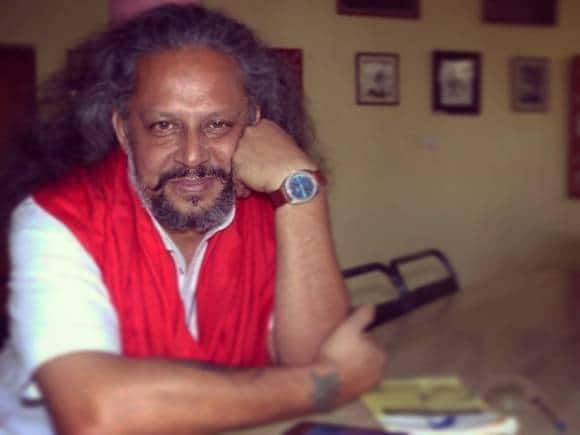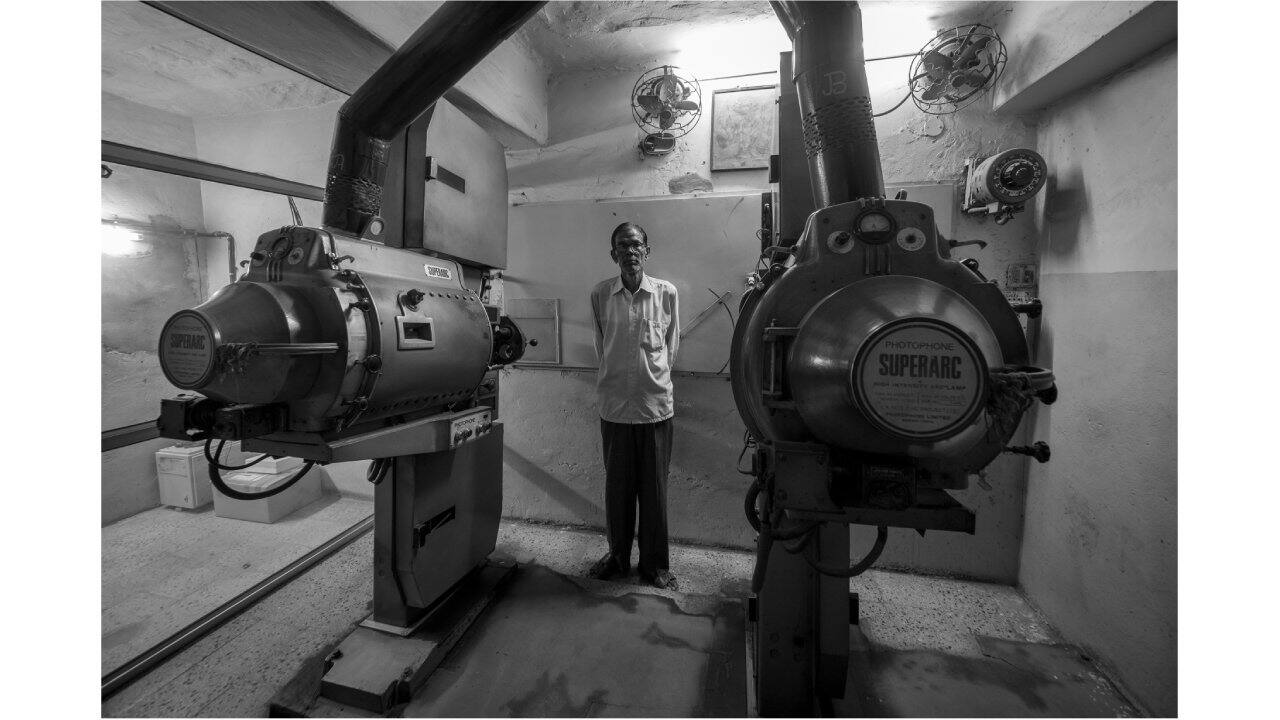



In 2019, cinematographer-turned-photographer Hemant Chaturvedi paid for what he thought was a tent accommodation on the banks of the Ganges in order to shoot some spectacular shots of the Ardh Kumbh at Prayagraj, only to realise later that he had been scammed off his money. Giving up the idea of attending the Kumbh all together, he decided to stroll around Allahabad near places where he grew up and take some images of the Allahabad University. A déjà vu moment found him walking towards a single-screen theatre called Lakshmi Talkies which had been shut for nearly three decades. By a stroke of luck and some contacts, he managed to go inside only to find the theatre stripped of everything. That, however, could not take away from the beauty of the stunning terrazzo flooring, marble pillars and old bannisters.
 Former Bollywood cinematographer and photographer Hemant Chaturvedi.
Former Bollywood cinematographer and photographer Hemant Chaturvedi.It was on January 19, exactly five years ago, that Chaturvedi took his first photograph of a single screen cinema hall. Five years hence, the 55-year-old photographer has travelled over 40,000 km across the country and shot more than 1000 single screen theatres as a way of documenting our cinema heritage. Thirty-two of those images can be viewed at the Kala Ghoda Café where they are part of an exhibition.
For the Mumbai-based photographer whose cinematography credits include Rendezvous with Simi Garewal (2001-02) and films such as Ram Gopal Varma’s Company (2002), Vishal Bhardwaj’s Makdee (2002) and Maqbool (2003) and Aparna Sen’s 15 Park Avenue (2005), Kareena Kapoor-starrer Kurbaan (2009), among others, documenting the single screen cinemas left in the country is his way of capturing the histories, anecdotes and cultural significance of these spaces. “I have done this project with a tremendous amount of detail, as opposed to just taking their shots and spinning some intellectual tale around them,” he says. Chaturvedi has documented the technology, the projectionist, the seats, the screens, the deities, the architecture and the interior design among other elements. “I have been collecting tickets from these cinemas and have a collection of nearly 800 tickets from all over the country,” he shares.
 Samrat Talkies, Sikar, Rajasthan. (Photo: Hemant Chaturvedi)
Samrat Talkies, Sikar, Rajasthan. (Photo: Hemant Chaturvedi)When Chaturvedi returned to Mumbai from Allahabad and recalled conversations with some of the cinema owners, he realised that at that rate of destruction, there probably wouldn’t be any single-screen theatre left in 5-10 years. “If in 1990, we had approximately 24,000 single screen cinemas, we barely have around 6,000 now,” he says.
Traversing the length and breadth of the country - most of it by road - in search of single-screen cinema halls has led him to discover some of the most amazing stories and experiences, sometimes in the middle of nowhere. From finding silent movie projectors from the 1920s to old film posters from the 1940s and '50s still stuck to the walls, it has been a discovery of immense proportions for the photographer.
 Globe Theatre, Ranikhet. (Photo: Hemant Chaturvedi)
Globe Theatre, Ranikhet. (Photo: Hemant Chaturvedi)In Punjab, he heard of a cinema hall in Muktsar district, where a horseman from a far-off village would be sent to buy advance tickets so that the entire village could travel on bullock carts to watch the film on a Sunday. At a place called Wadhwan in Gujarat, he heard from a cinema manager that because their village was so far, a film which was released in the nearest B-centre Ahmedabad would finally release there after almost two or three years! “Their village had a tradition that every time a film with a known name was released in Ahmedabad, they would collect money for the movie ticket, food and lodgings for an old man from their village who would be sent off by bus to watch the movie. He would be greeted with an aarti when he returned and the entire village would gather under the Banyan tree in the evening to hear the film’s story from him,” narrates Chaturvedi.
The photographer shares that opposite Regal cinema in Colaba, Mumbai is an old antiques shop with all kinds of memorabilia. “They also have a chest of drawers with lithographs of old paintings, etchings and water colours of scenes of India and Bombay painted by the British, the Portuguese, the French and the Dutch. Sometime in the 1700s, a Britisher climbed up Malabar Hill which was a jungle back then and painted the Girgaum fishing village. If that man had not made that effort, we would not have known what it looked like back then, what people wore or what the terrain was like. I look upon this project in the same way, that 100 years from now, when all the single screen cinemas are gone, at least there will be some repository of visual elements of those places,” says the photographer.
The exhibition at Kala Ghoda Café will continue till March 31, 2024Discover the latest Business News, Sensex, and Nifty updates. Obtain Personal Finance insights, tax queries, and expert opinions on Moneycontrol or download the Moneycontrol App to stay updated!
Find the best of Al News in one place, specially curated for you every weekend.
Stay on top of the latest tech trends and biggest startup news.